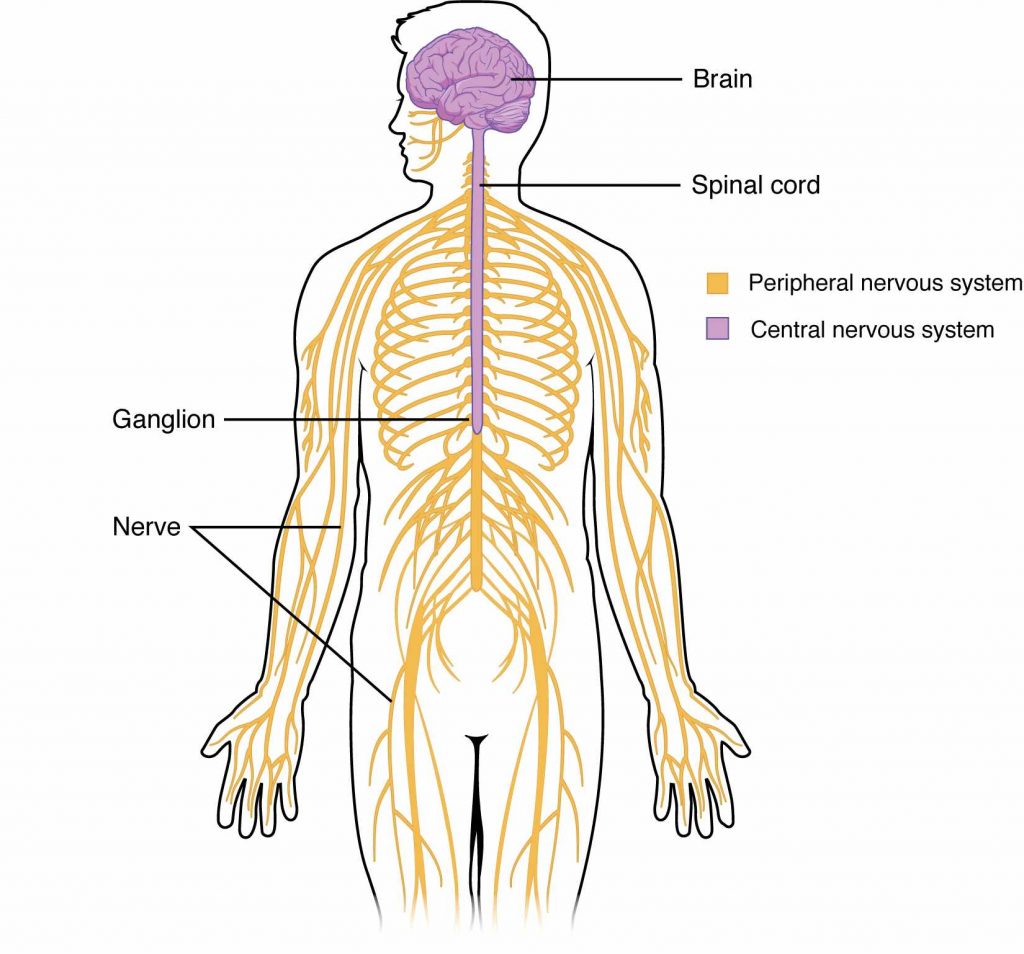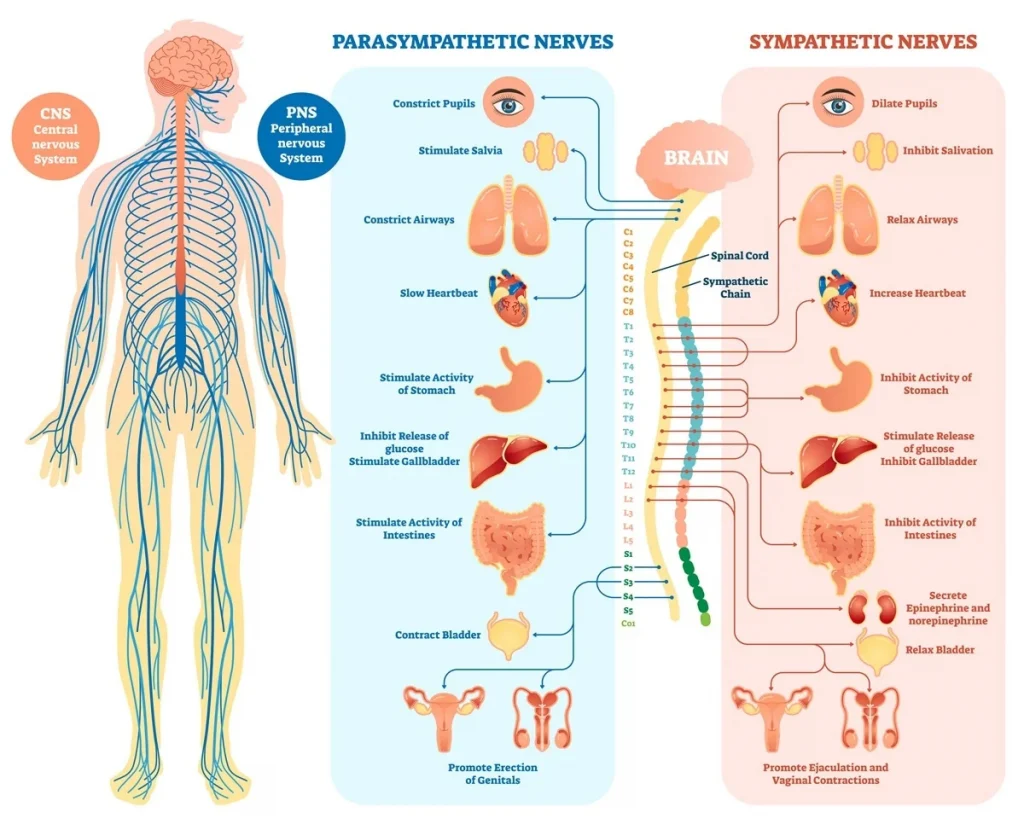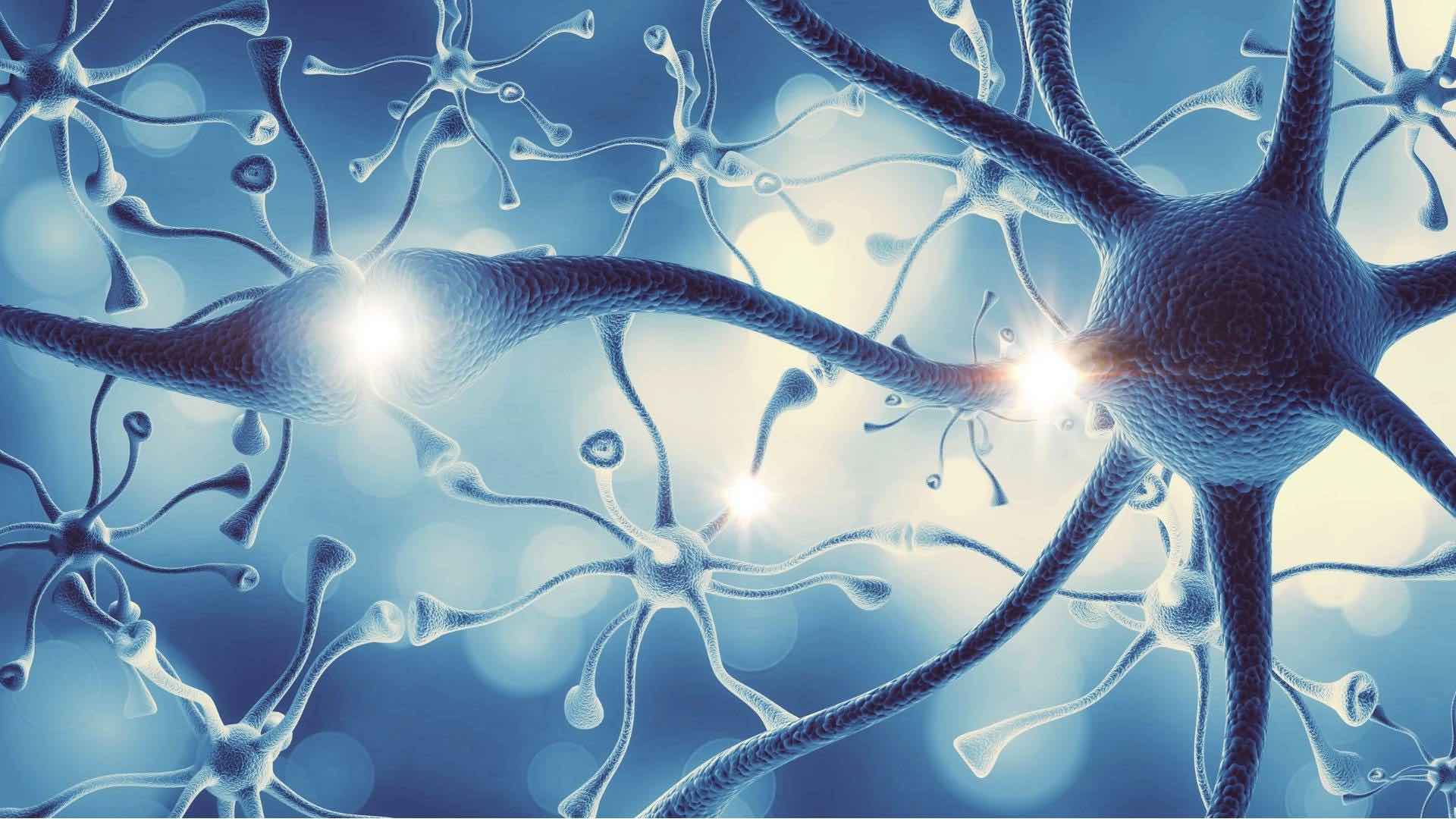Mindfulness meditation is ever growing in popularity. Especially for those interested in improving their mental wellbeing, general health, and self-awareness.
Experts often discuss the benefits meditation has on the body and brain. This includes your nervous system, which is responsible for all your body’s functions and reactions.
In this article, I’ll explain these positive effects in detail.
But first you need to understand what the nervous system is. Why it’s important, and know about the functions of each type. So, let’s get to it, shall we?
What is the Nervous System?

Think of the nervous system as your body’s command centre.
As you can see from the image above, your brain attaches to your spinal cord. This connects to the rest of your body via nerves, which send signals to different parts of your body.
It’s a complex system. So, I don’t want to get caught in a detailed biological description of it. But, it’s helpful to at least have a basic understanding of the nervous system. Especially to appreciate how meditation affects it.
The nervous system controls and regulates everything in your body. This includes:
- Movements, balance, coordination
- Digestion and bodily processes
- Immune system
- Organ function
- Heart and breathing rate
- Your senses (sight, hearing, touch, smell, and taste)
- Feelings and emotions
- Thoughts, learning, and memory
- Sleep, healing, and development
- Response to stressful situations
- Response to environmental changes
- The ability to be alert, or relaxed
As you can see, the nervous system is a dynamic and vital part of your body’s constitution. There are also two different types of our nervous system to be aware of.
Types of the Nervous System

There are two types of the nervous system:
1. sympathetic
2. parasympathetic
Both are important but serve different purposes.
The sympathetic nervous system (SNS) prepares your body for emergency or stressful situations. It does by triggering your fight-flight-or-freeze response.
When this happens you’ll start breathing faster. Your heart rate and blood pressure will increase, causing more blood to flow to your organs and muscles. Your body will also release stress hormones such as adrenaline. You may become sweaty and your pupils will dilate.
Sounds intense right? Well, it’s meant to be. Your body is getting you ready to stay and fight, run away, or freeze.
It’s on high alert.
Ever been overly anxious about something? Involved in a stressful conflict or altercation? Have you ever frozen in a state of fear? If so, your nervous system triggered your fight-flight-or-freeze response.
Our bodies are incredible. Your sympathetic nervous system enables you to survive during these intense moments. Think of it as your acceleration pedal.
The parasympathetic nervous system (PSNS) helps you to rest and relax. It maintains your regular heart rate, metabolism, breathing, immune function, and digestion. Which is why it’s referred to as the ‘rest and digest’ response.
Think of the PSNS as your brake pedal. It does the complete opposite to the SNS. Plus, it enables you to be calm, restore, heal, grow, and promotes development.
As you can see both systems play their own vital role. Throughout the day your body will fluctuate between using the two. When one goes up, the other one goes down, much like a balancing scale.

Did you oversleep and now you’re running late for work. It’s time for your SNS (acceleration pedal) to kick in to get you running out the door.
Now it’s evening time. After a delicious meal with friends, it’s time to relax and digest your food. Here’s when you need your PSNS (brake pedal).
Doing an intense workout at the gym? Your brain will activate your SNS. Time to sleep after a long stressful day? Time for your PNSN to help prepare your mind and body for rest. You get the idea.
Problems occur however when you get stuck in one or the other for too long.
The Consequences of Being Stuck in the SNS

Your nervous system can be damaged through disease, injury, nerve damage, and substance abuse. But what you think and how you react to life also has an impact.
We all face stresses, difficulties, obstacles, and challenges. However, if you allow your mind to control you, instead of using it like a tool, there can be consequences.
Your mind will struggle to activate your sympathetic nervous system. It will be difficult for you to rest and relax. If you’re also suffering acute anxious, you won’t be able to distinguish between a real threat and one you made up.
“Overthinking is the art of creating new problems out of ones that never existed in the first place.”
— Anonymous
This can also result in insomnia and then the tedious cycle begins. You’re tired but wired. You want to sleep but your mind won’t allow you to rest. From personal experience, I know how hopeless this can feel.
Even if you’re able to still switch off at night and sleep, triggering your SNS for long periods will take its toll.
So, how can you take positive action?
How can you become more in tune with your body? And is it possible to tap into your parasympathetic nervous system you like on command?
Here’s where meditation can help.
How Does Meditation Calm Your Nervous System?

The biggest misconception about meditation is that you empty your mind from thought. This is impossible though.
Thoughts arise sporadically and uncontrollably. You can’t prevent them from appearing. What you can do, is to observe them come in and out of your awareness, without getting tangled up in them.
The aim of meditation is to pay attention to what is arising in the present moment, without judgement. That can include sounds, sensations, feelings, emotions, thoughts, and the breath.
As you do this, you become more self-aware, grounded, peaceful, and relaxed. You’re no longer ruminating about the past, or planning/predicating the future.
It’s common during meditation to use breathing as an anchor to stay grounded in the present.
When your mind wanders, you bring your focus back to deep and mindful breathing. Overtime you develop your attention like a muscle.
As you meditate and take mindful breaths, you go through three stages:
1. Settling
2. Grounding
3. Resting
Once you get to the resting stage, you feel still, calm, peaceful, and relaxed. This deactivates your sympathetic nervous system, whilst activating your parasympathetic nervous system.
Now your level of stress hormones, breathing, heart rate, and blood pressure will all lower.
You’ll naturally switch into rest mode.
Meditating can reduce stress, anxiety, depression, emotional reactivity, and pain. As well as creating positive, long lasting physical changes to the brain.
Amazing stuff, right?
“Your calm mind is the ultimate weapon against your challenges.”
— Bryant McGill
How to Approach Meditation Correctly

It’s important to not get carried away and make this the aim every time you meditate though. Why?
1. Depending on your state of mind and environment, it can be challenging to get to the resting phase.
If you have a lot going on, it may not be possible in that moment, or it could take significantly longer than you expect.
2. Setting a goal for meditation can be counterproductive.
It creates unnecessary pressure. If you don’t get to the ‘resting’ phase, you’ll likely deter yourself from trying again. You may end up turning meditation into its own form of stress and anxiety.
Remember it takes time, practice, and patience to develop meditation.
Also, if you’re only focussed on getting to the ‘resting’ stage, you can miss important feelings and emotions. Ones arising which may need attention.
For example, you may be feeling sad, hurt, angry, or anxious. It’s significant to be attentive to these sensations. Doing so will bring them into your awareness and can release them in a healthy way.
So, try not to get somewhere when meditating. Focus on whatever is occurring in the moment without judgement. Approaching meditation in this way is much healthier. Plus, it will increase your chances of getting to the resting stage anyway.
Meditation Can Be a Powerful Tool
There are other ways to relax and activate your PSNS. You could exercise, go for a walk, journal, listen to music, and socialise with friends.
But I love meditation because it empowers us to take back control, using the power of our minds.
Mediation also develops your self-awareness and mind-body connection. Giving you the skill to regulate it as you please.
Overtime, you can learn to use your mind like a tool. Instead of it using you. Just remember that like any new skill, it takes time to develop. Be patient and stick with it.
Did you find this article informative? Does it surprise you that we can use meditation to turn on our PSNS?
I’d love to hear your thoughts in the comments.
Take care of yourselves,
Chris from Mindful Way to Be



